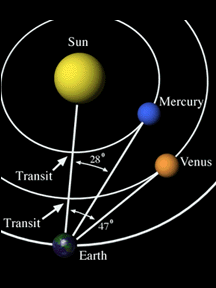This graphic shows the orbits of Mercury and Venus within the orbit of the Earth, and the maximum angular distance between these planets and the Sun as viewed from the Earth
Click on image for full size
Courtesy of NASA.
The Innermost Planets as Bright Stars
Venus and
Mercury,
the innermost planets in the solar system,
always appear only a small distance away from the
Sun in the sky.
Mercury is
so small and so close to the Sun (always within 28 degrees) that it is
difficult to see from Earth, since it is usually lost in the Sun's
glare. The innermost planet can be seen with the naked eye only at
twilight, very low in the sky, near the horizon.
From Earth, Venus can appear up to 47 degrees away from the Sun. During
these times, when it rises or sets a few hours before or after the Sun,
it can be seen just before sunrise or just after sunset as a bright
morning or evening star. At these times, Venus is
up to 15 times brighter than the brightest star, Sirius, and can even
cast shadows.
You might also be interested in:
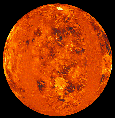
Venus is the second planet from the Sun, and is Earth's closest neighbor in the solar system. Venus is the brightest object in the sky after the Sun and the Moon, and sometimes looks like a bright star
...more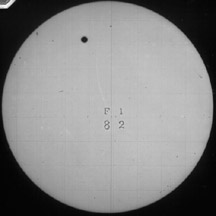
Sometimes Venus passes between Earth and the Sun. This event is called a transit of Venus. Transits of Venus don't happen very often. There is a pattern in the time between transits of Venus. The pattern
...more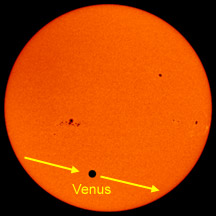
Sometimes the planet Venus gets between Earth and the Sun. Astronomers call that a "transit" of Venus. A transit is a little bit like an eclipse of the Sun, when the Moon gets between Earth and the Sun.
...more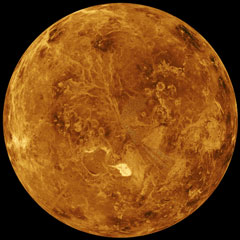
Venus is the hottest planet in our Solar System. On Earth, places near the equator are much warmer than places near the poles. On Venus, it is really hot everywhere... even at the North and South Poles.
...more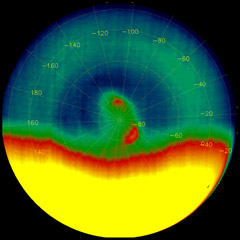
A vortex is a swirling, circular movement of air and clouds... like in a tornado or hurricane. The plural form of vortex is "vortices". The planet Venus has vortices in its atmosphere above each of its
...more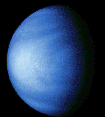
The following may be the history of Venus. Venus formed about 4 Billion Years ago. at the conclusion of forming it continued to be bombarded with leftover material. Many planets still bear the remains
...more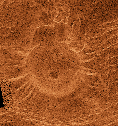
This is an example of a volcanic tick.
...more


